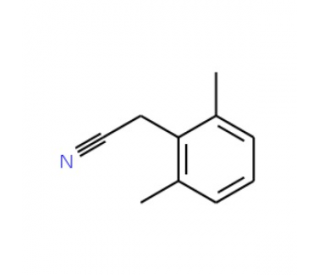详细说明
Purity
>90%, by SDS-PAGE under reducing conditions and visualized by silver stain
Endotoxin Level
<0.10 EU per 1 μg of the protein by the LAL method.
Activity
Measured by the ability of the immobilized protein to support the adhesion of HuT 78 human cutaneous T cell lymphoma cells. Optimal dilutions should be determined by each laboratory for each application.
Source
Mouse myeloma cell line, NS0-derived
Mouse CD6
(Leu18 - Gly396)
Accession # Q91WN5DIEGRMD Human IgG1
(Pro100 - Lys330)6-His tag N-terminus C-terminus Accession #
N-terminal Sequence
AnalysisLeu18
Structure / Form
Disulfide-linked homodimer
Predicted Molecular Mass
68.6 kDa (monomer)
SDS-PAGE
116 kDa, reducing conditions
727-CD |
| |
Formulation Lyophilized from a 0.2 μm filtered solution in PBS. | ||
Reconstitution Reconstitute at 100 μg/mL in sterile, deionized water. | ||
Shipping The product is shipped at ambient temperature. Upon receipt, store it immediately at the temperature recommended below. | ||
Stability & Storage: Use a manual defrost freezer and avoid repeated freeze-thaw cycles.
|
Background: CD6
CD6 is a member of the group B scavenger receptor cysteine-rich (SRCR) superfamily. CD6 is a type I membrane glycoprotein and contains three extracellular SRCR domains. CD6 is expressed at low levels on immature thymocytes and at high levels on mature thymocytes. The majority of peripheral blood T cells, a subset of B cells, and a subset of neuronal cells express CD6. Mouse CD6 is a 626 amino acid (aa) protein with a 24 aa sequence, a 372 aa extracellular domain, and a 204 aa cytoplasmic region. The 668 aa human homolog has also been identified. The human and murine proteins share 70% aa identity over their full-lengths.
The role of CD6 has not been fully elucidated. However, it appears to play a role as both a co-stimulatory molecule in T cell activation and as an adhesion receptor. Studies demonstrating a mitogenic effect for T cells with some CD6 specific monoclonal antibodies, in conjunction with either accessory cells or PMA and anti-CD2 mAb, support the concept of CD6 as a co-stimulatory molecule. Additionally, anti-CD6 monoclonal antibody has been used as an immunosuppressive agent for patients undergoing kidney or bone marrow allograft rejection. It has also been used to remove CD6+ T cells from donor bone marrow prior to allogenic bone marrow transplantation. Other studies have demonstrated an adhesive role for CD6, it has been demonstrated to bind the activated leukocyte cell adhesion molecule (ALCAM, CD166). CD6/ALCAM interactions have been postulated to play a role in thymocyte development. Additionally, the presence of ALCAM on neuronal cells may provide a mechanism of interaction between CD6+ T cell and ALCAM+ neuronal cells. Phosphorylation of the CD6 molecule appears to play a role in CD6-mediated signal transduction. Serine and threonine residues become hyperphosphorylated and tyrosine residues become phosphorylated when T cells are activated with anti-CD6 mAb in conjunction with PMA, anti-CD2, or anti-CD3 mAb. The CD6 intracellular domain contains regions that can interact with SH2 or SH3 containing proteins. However, the signaling pathways have not been elucidated.
References:
Gangemi, R. et al. (1989) J. Immunol. 143:2439.
Aruffo, A. et al. (1991) J. Exp. Med. 174:949.
Swack, J.A. et al. (1991) J. Biol. Chem. 266:7137.
Robinson, W.H. et al. (1995) Eur. J. Immunol. 25:2765.
Whitney, G. et al. (1995) Mol. Immunol. 32:89.
Starling, G.C. et al. (1996) Eur. J. Immunol. 26:738.
Degen, W.G. et al. (1998) Am. J. Pathol. 152:805.
Swack, J.A. et al. (1989) Mol. Immunol. 26:1037.
Pawelec, G. and H.J. Buhring (1991) Human Immunol. 31:165.
Osorio, L.M. et al. (1995) Cell Immunol. 166:44.
Robinson, W.H. et al. (1995) J. Immunol. 155:4739.
Singer, N.G. et al. (1996) Immunology 88:537.
Aruffo, A. et al. (1997) Immunol. Today 18:498.
Entrez Gene IDs:
923 (Human); 12511 (Mouse)
Alternate Names:
CD6 antigenFLJ44171; CD6 molecule; CD6; T12; Tp120; TP120T-cell differentiation antigen CD6











 粤公网安备44196802000105号
粤公网安备44196802000105号